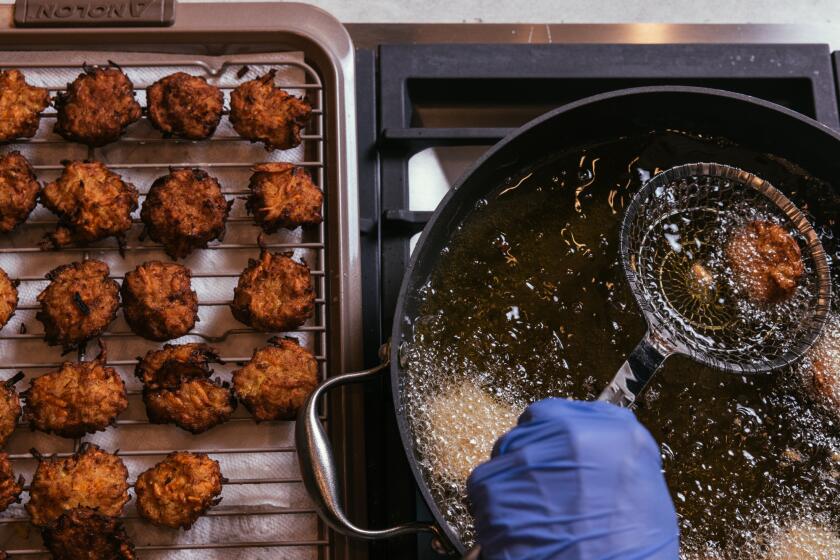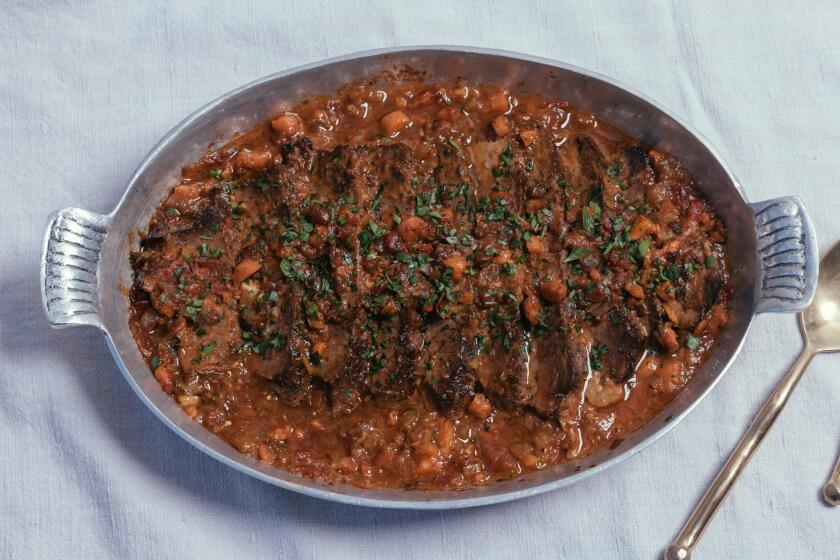Hanukkah is the season for frying the way Jewish Romans do — with abandon

- Share via
From crisp and velvety fried artichokes to honey-soaked matzo fritters studded with pine nuts and raisins, the Jews of Rome have a centuries-long passion for frying food.
This obsession is evident year-round at the many restaurants lining the main street of Rome’s historic Jewish neighborhood. There, menus invariably feature fried artichokes along with fried fresh anchovies, battered baccalà (salt cod) and stuffed risotto croquettes. But Roman Jews’ fritter frenzy peaks on Hanukkah, when eating fried food is paramount.

For pezzetti fritti (literally, “fried pieces”), use vegetables such as zucchini, mushrooms, onions, potatoes, cauliflower, sliced artichokes and parsnips. (Rebecca Peloquin / For The Times)
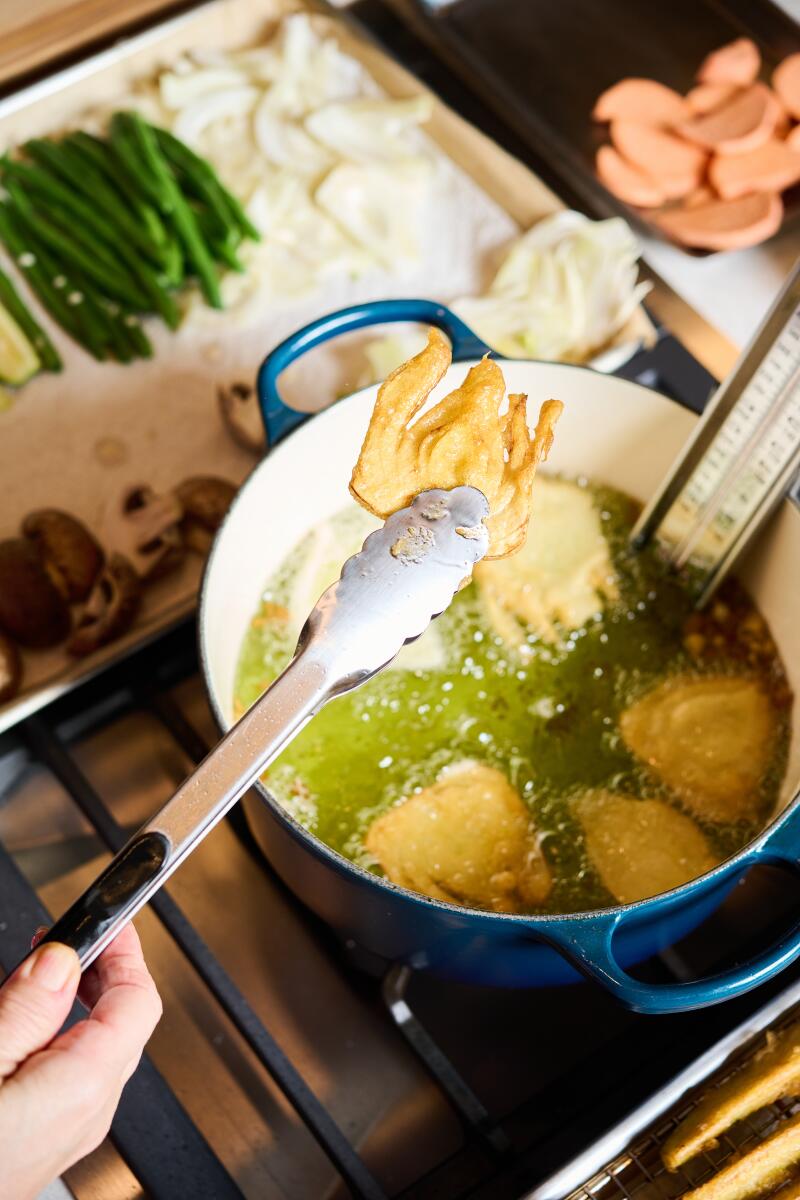
Mixed fried vegetable, commonly known as fritto misto, are beloved by all Romans, but the deep-frying method hails from the Roman Jewish kitchen. (Rebecca Peloquin / For The Times)
Hanukkah, which is Dec. 7 to 15 this year, commemorates the victory of a small Judean army called Maccabees over the ancient Greeks, and the rededication of the Holy Temple in Jerusalem. As the story goes, the Maccabees found only enough olive oil among the ruins of the Temple to light its menorah for one night, but the oil miraculously burned for eight nights. So frying in oil is an essential part of the holiday. It is a source of joy and comfort every year on Hanukkah, and particularly so this year, as the world grapples with war and sorrow in the Middle East.
Ashkenazi Jews traditionally indulge in fried potato latkes, and Sephardi Jews eat a variety of doughnuts and other goodies. But in Rome, the deep-fried potential is endless.
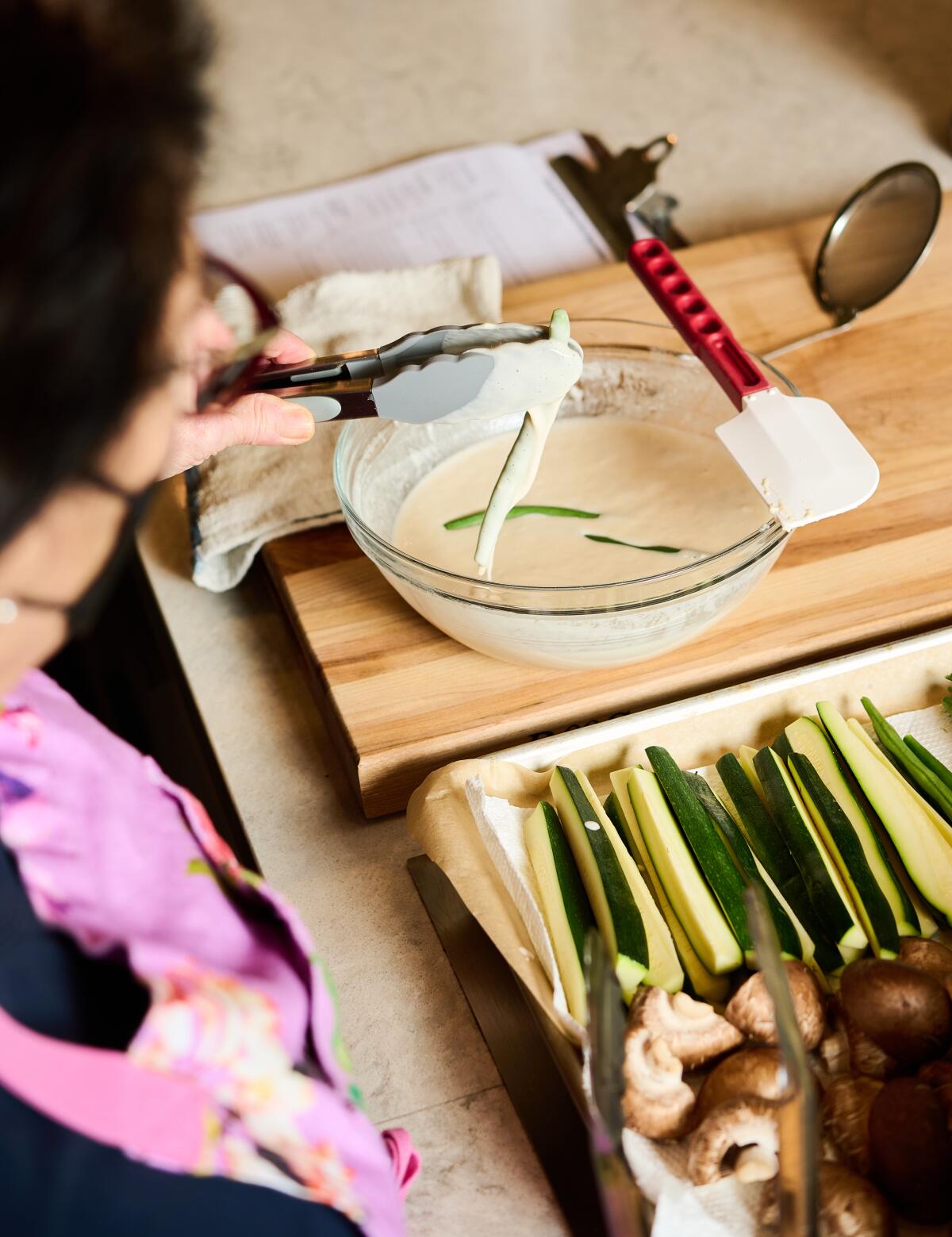
The Jewish community of Rome dates back more than 2,000 years, and has existed there continuously ever since. Throughout the millennia, Jews were regarded with varying degrees of tolerance and disdain by the wider community, and at times were subjected to intense persecution. Most impactfully, between 1555 and 1871, Rome’s Jews were compelled by papal decree to live in the Roman ghetto — a four-block-wide gated slum along the Tiber River that was cramped and flood-prone. Their personal and spiritual lives were restricted in myriad ways, from not being allowed to engage in most professions, to being forced to attend Sunday Mass at one of the churches just beyond the gates of the ghetto.
This latkes recipe produces crisp, golden potato cakes with squash served with a Middle Eastern-inspired yogurt-mint dip with date molasses. Serve for Hanukkah.
Ironically, these centuries of strife helped shape a tightly knit community with a proud and distinct culture. And its cuisine, which is defined by its simple but full-flavored approach to cooking vegetables, hearty stews and braises, and delicate desserts made with almond flour, ricotta and sour cherries, is unlike any other in the world.
One of the professions allowed to Jews during the ghetto period included being friggitori (literally, “fryers”) — in other words, street vendors selling fried vegetables and fish to passersby. Along with the abundance of inexpensive, locally produced olive oil, this restriction helped to solidify the centrality of fried food in Roman Jewish cuisine. The fact that fried foods are undeniably delicious didn’t hurt either.

Today, Rome’s 17,000 Jews live scattered throughout the city, but the historic ghetto neighborhood remains a center for the community. And on Hanukkah, just like the rest of the year, Roman Jews fry.
Some fritters, like fried zucchini blossoms stuffed with melty mozzarella and anchovies, are beloved in all Roman kitchens. Others, like torzelli — a sultry tangle of deep-fried curly endive — are specific to the Jewish community. And still others, like the battered and fried vegetable melange widely called fritto misto (but called pezzetti fritti, or “fried pieces,” by Rome’s Jews), are enjoyed widely but have their roots in the Roman Jewish kitchen.
Fried mixed vegetables, which I invariably order whenever I dine in Rome (and also love to make at home), transform whatever bits and bobs you have in your vegetable crisper into edible magic.
These best practices will make your Hanukkah (or Passover or Shabbat) brisket the most flavorful, tender brisket it can be.
The pezzetti fritti recipe in my cookbook “Portico: Cooking and Feasting in Rome’s Jewish Kitchen” calls for green beans, mushrooms, fennel and zucchini, but you can absolutely improvise. “Onion, potato, parsnips, even mozzarella — whatever you have is good,” said Giovanni Terracina, the co-founder of Roman kosher catering company Le Bon Ton.
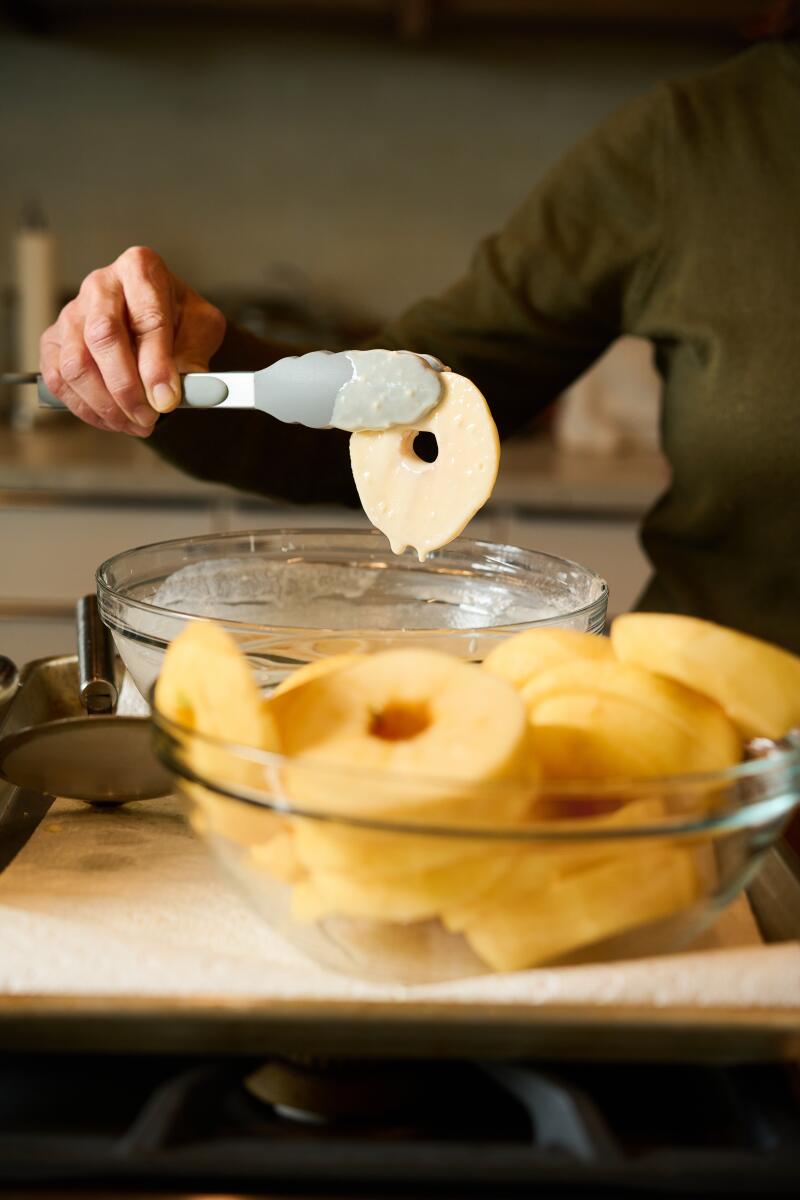
© Rebecca Peloquin (Rebecca Peloquin / For The Times)
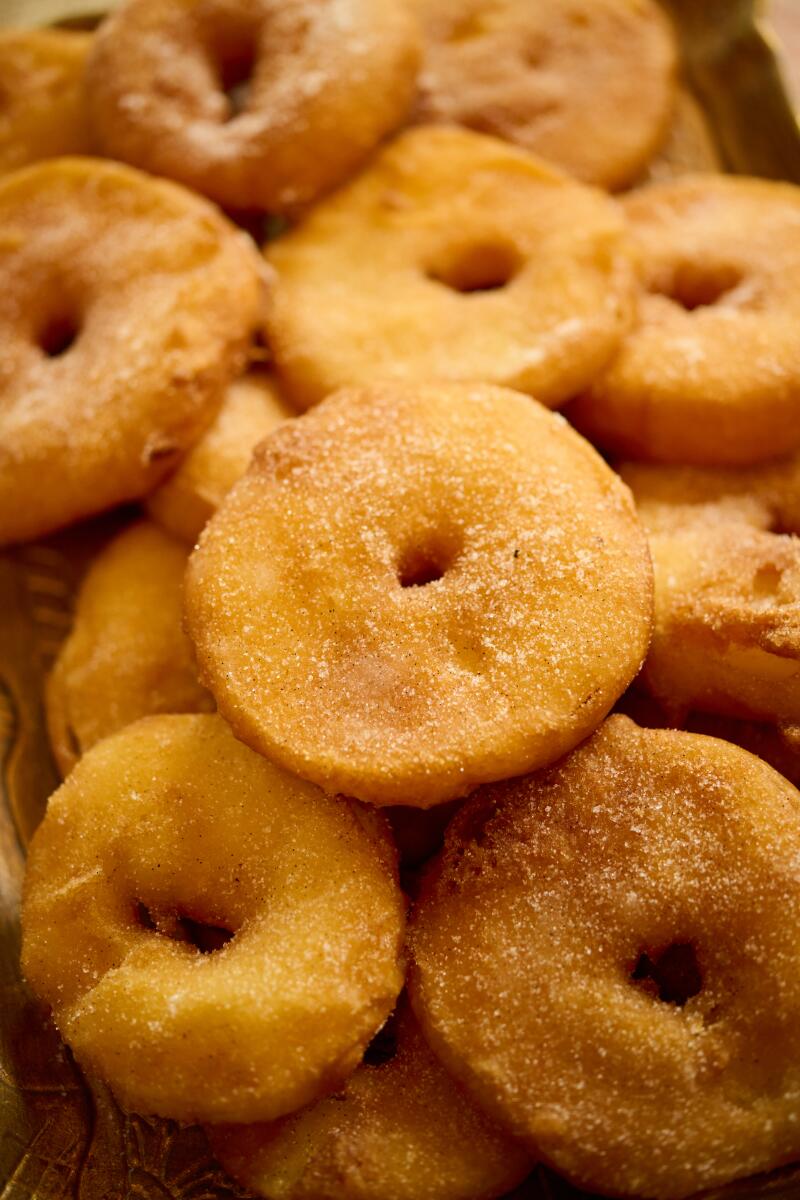
© Rebecca Peloquin (Rebecca Peloquin / For The Times)
In Rome, I learned from Terracina, batters are traditionally quite thick, fully encasing whatever is inside. My personal take on the batter is a bit lighter, allowing the mix of vegetables to shine. Served with a generous squeeze of lemon juice, they are magnificent.
The apple fritters, or mele fritte, in “Portico” is another favorite dish. My recipe is inspired by one I found in “Dal 1880 ad Oggi: La Cucina Ebraica della Mia Famiglia” (“From 1880 to Today: My Family’s Jewish Cuisine”), a handwritten cookbook published in 1982 by Donatella Limentani Pavoncello.
Follow these best practices to help your Hanukkah (or Passover or Shabbat) brisket be the best it can be.
Pavoncello includes mele fritte — apple rings coated in batter and fried until they are ethereally crisp and light outside and custardy-sweet within — in her Hanukkah menu. And now I do too. Because I am never giving up my potato latkes, but when it comes to Hanukkah, why not also fry like the Romans do?
Leah Koenig is the author of seven cookbooks, most recently “Portico: Cooking and Feasting in Rome’s Jewish Kitchen” (W.W. Norton). She also writes a weekly Substack newsletter called The Jewish Table.
Get the recipes
Mele Fritte (Apple Fritters With Vanilla Sugar)
Pezzetti Fritti (Mixed Fried Vegetables)
More to Read
Eat your way across L.A.
Get our weekly Tasting Notes newsletter for reviews, news and more.
You may occasionally receive promotional content from the Los Angeles Times.
